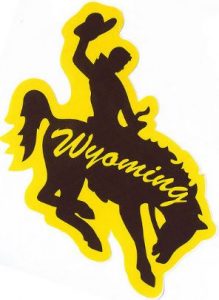 “Robert L. Hendry should feel at ease, running a vast cattle ranch smack in the center of a state that since 1936 has treasured its trademark logo: a cowboy riding a bucking bronco.
“Robert L. Hendry should feel at ease, running a vast cattle ranch smack in the center of a state that since 1936 has treasured its trademark logo: a cowboy riding a bucking bronco.
But this real live cowboy darkened today at the memory of a rash of vandalism that struck ranchers along the Rattlesnake Range here as fundamentally ”un-Wyoming.” In mid-June, as the Wyoming Stock Growers Association was meeting in Casper, 40 miles east of here, a carload of vandals traveled 100 miles up and down dirt roads here, cutting 260 sections of barbed-wire fence.
”Just in time for the welfare cowboys’ convention,” read leaflets nailed to fence posts. No group has taken responsibility for the action and no arrests have been made. But two months earlier, Earth First Journal, a clearinghouse for the radical environmental movement, hailed ”rampant fence cutting” in central Wyoming, concluding with an appeal, ”Dust off those wire cutters, folks!”
In this modern range war, radical environmentalists seek to force grazing cattle off public land by cutting fences and otherwise carrying out economic sabotage against ranching operations. With beef prices low, many Western ranchers already have their financial backs to the wall.
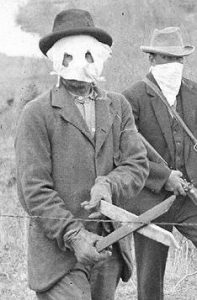 Now, in a throwback to the 19th century when fence cutting was a hanging offense in the wilder parts of the West, violence looms over barbed wire in big sky country.
Now, in a throwback to the 19th century when fence cutting was a hanging offense in the wilder parts of the West, violence looms over barbed wire in big sky country.
”For their own safety, they better lay off,” Mr. Hendry warned of the people who cut his fences in 60 places. ”If the right group finds them, they might get shot.”
Agreement came from Chuck Sylvester, a neighboring rancher who was also a target of the fence cutters, who drove a sports utility vehicle. He said: ”Some day, they are going to make a mistake. Any number of my neighbors are now carrying rifles. They could knock out a tire, knock out a knee.”
Continue reading the main story
Across the West, stakes are rising in the battle between mainstream society and radical environmentalists and animal rights groups.
Last week, in one of the toughest sentences handed down in a case of animal rights terrorism, a Salt Lake City judge gave a seven-year sentence to Douglas Joshua Ellerman, a 20-year-old Animal Liberation Front member, for his role in the 1997 firebombing of Utah’s principal mink breeders’ cooperative.
[On Thursday, an Earth First member, David Chain, was killed by a falling tree as he tried to block the logging of ancient redwoods in Northern California. It is the first time a member of the group has been killed in more than a decade of confrontational protests.]
In cattle country, vandalism has escalated to the point where more and more ranchers are starting to speak out. In Wyoming, a crackdown on fence cutters has become a campaign issue in this fall’s county sheriff races.
”This has been going on for three or more years, but we have kept it quiet,” said Ken Hamilton, a leader of the Wyoming Farm Bureau, an agricultural group. ”We didn’t want to give the terrorists more oxygen.”
In central Wyoming, batches of fences were cut four times last year. But the public did not become aware until June 20, when the wide-scale attack on fences here was reported in The Casper Star-Tribune.
”My concern is: How far are they going to go?” said Sgt. Michael Sandfort, who is investigating the case here for the Natrona County Sheriff’s Department. ”Cut fences are an irritation. But what if we get shot livestock, destroyed windmills, shot up water tanks? Then we are talking big bucks.”
Across the West, many environmentalists oppose allowing ranchers to graze livestock on Federal lands, whether national forests or lands of the Bureau of Land Management.
”Cows munch the trees, they destabilize the stream banks by tromping up and down, they compact the soil with their hooves,” said Peter Galvin, a conservation biologist for the Southwest Center for Biological Diversity, a Tucson group that seeks to curtail ranching on public lands through lawsuits. ”Millions and millions of acres have been stripped bare, just like in logging and strip mining. Only grazing has done it in a slightly more subtle level.”
Most opponents of livestock grazing on public lands, like the Southwest Center, use legal means in their effort to turn the region’s ecological clock back to 1875, the year that barbed wire began to fence the West’s wide open spaces.
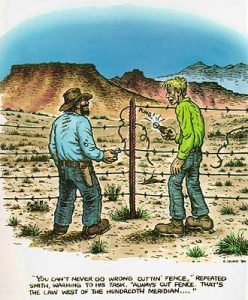 But a radical fringe prefers to take direct action, ranging from snipping barbed wire, to burning down cattle auction barns, to, in one case in southern New Mexico, mowing down cattle with an AK-47.
But a radical fringe prefers to take direct action, ranging from snipping barbed wire, to burning down cattle auction barns, to, in one case in southern New Mexico, mowing down cattle with an AK-47.
About 30 incidents of cattle shootings have occurred in the last three years, said Barry R. Clausen, private investigator in Northern California who monitors environmental extremist activity. Talking by phone from Tucson, where he was lecturing to ranchers, Mr. Clausen said of Arizona: ”There have been 20 cases of fence cutting in the last six months. Water tanks have been damaged. Windmills have been damaged.”
In 1985, David Foreman, a founder of Earth First, published a technical manual to ”monkey-wrenching,” which is jargon for sabotage. The book, which has been through eight printings, dedicates 14 pages to vandalizing ranches — stealing salt blocks, plugging water pipes, smashing water tanks, disabling windmills, and cutting fences.
”Some experts estimate that 100 people cutting fences on a regular basis around the West could put the public-land ranchers out of business,” wrote Mr. Foreman, who is chairman of the Wildlands Project, an environmental group in Tucson.
In spring 1997, Earth First Journal published a step-by-step guide to cutting barbed-wire fences.
”The Journal does not take a position on monkey-wrenching,” said Theresa Kintz, an editor for the Oregon publication. ”But, personally, I think it’s pretty cool.”
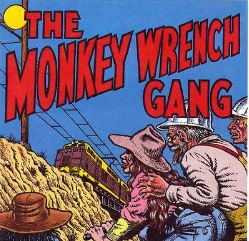 ”There should not be ranching on public lands — it’s like welfare,” she added, stressing that these were her personal opinions. ”If people are out there using monkey-wrenching to keep ranching off public lands, I’m all for it.”
”There should not be ranching on public lands — it’s like welfare,” she added, stressing that these were her personal opinions. ”If people are out there using monkey-wrenching to keep ranching off public lands, I’m all for it.”
Many ranchers have kept a low profile in the face of violence.
”People are upset,” said Jack Roddy, a central California rancher who has lectured stock grower groups about the sabotage campaign problem. ”But I can’t see a lot of them stepping forward to organize to get this stuff stopped.”
”A lot of people fear retaliation. I am a perfect example. I had 14 head of cattle killed because I talked.”
Out here in the rural areas of Natrona County, where 10,000 people are scattered over an area the size of Connecticut, people are angry, suspicious and frightened. Ranchers, some of them deputized by the county sheriff, have begun to stop unknown vehicles, asking drivers what their business is, and writing down license plate numbers.
”It’s not only shocking and frustrating, it’s a little frightening,” Gaynell Park, a rancher whose fences were cut, said today as she sat in her living room. ”These people are faceless. We don’t know what else they might do.”
RANGE / RANGEFIRE! — Addressing Issues Facing the West / Spreading America’s Cowboy Spirit Beyond the Outback
You may also like
-
Omnibus bill provision would “unleash” electronic tracking on nation’s cattle
-
Arizona rancher sues to stop million-acre national monument
-
VDH: How to Destroy the American Legal System
-
Bob West: Facing the reality of wolves, Colorado ranchers need to be prepared
-
Protect The Harvest: The whole truth about Western ranching

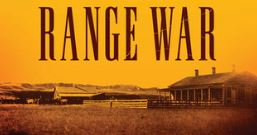
obviously, these nutjob environmentalist fence cutters, are vegetarians goons.
yeh, the public lands grazing of cattle is a subsidy. It subsidizes our ability to survive by eating meat.
Without meat, man would not survive. Meat is how man survived to this day.
I love animals.
They taste good.
Lem